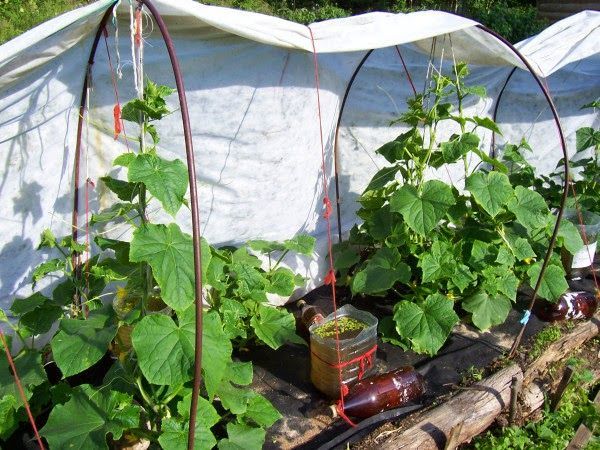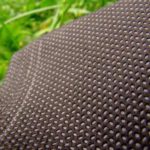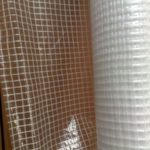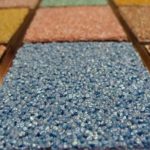With the approaching summer season, many are beginning to think about how to grow vegetables in their backyard, while achieving maximum yields. The most painful issue is the cultivation of cucumber - a culture quite capricious. To minimize the negative phenomena, many use a special covering material. This technology allowed growing this vegetable even in cold climatic conditions.
Table of contents
Why do we need black covering material for cucumbers
Culture is rightly considered one of the fastidious, although it is traditionally planted by every owner. Plant does not tolerate cold and strong shadow, but also under strong sunshine is able to burn.
Equally important is the moisture content of the soil composition and air, which must be maintained mainly artificially. There are still enough conditions that are necessary for obtaining decent yields.
This allows in the middle of the spring season sow seeds or transplant seedlings, without fear of any late frost.
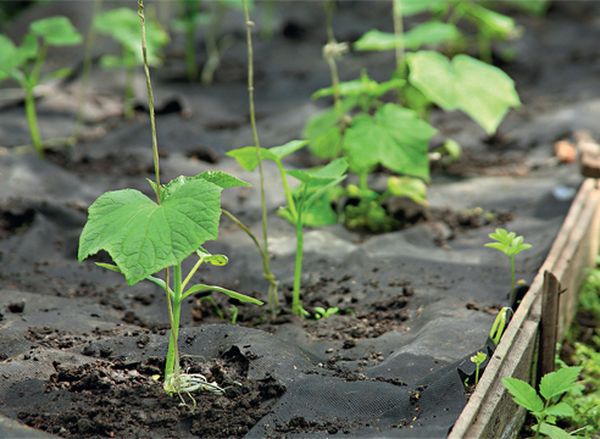
The use of covering material eliminates immediately a number of problematic issues. If you cover cucumbers - the planting season can be started a little earlier than usual, and the first crop will arrive in time faster, because the plants will well protected from wind and frost.
Protective film reduces exposure to sunlight, increases moisture, reliably protects the beds from harmful parasites and diseases that can destroy plants.
Cover materials are different. Today the market offers consumers:
- reinforced polyethylene film;
- air bubble film;
- PVC film;
- non-woven spandbond;
- simple polyethylene.
- Spunbond nonwoven fabric
- Reinforced plastic film
The most popular are opaque agricultural canvas and film. Beds with seedlings are first covered with a canvas, which creates protection from wind and frost. In addition, a plastic film is pulled from above.
Advantages and disadvantages of using spunbond when growing cucumber
Soft and lightweight covering material does not hurt culture, perfectly passes light, air streams and moisture on soil. It is resistant to ultraviolet rays, accumulates heat, protecting plants from harmful radiation. It can be applied in greenhouses as a second cover.It is easy to use, does not require large financial expenses.
Watering is carried out along its top. It should be added that the film is resistant to damage, it can be sewn, glue and even wash if necessary.
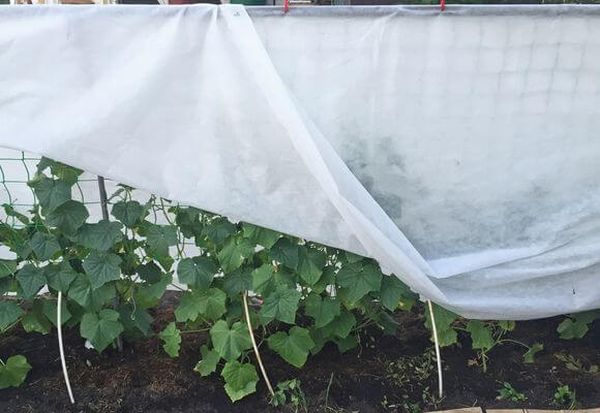
But at the same time the canvas not a panacea for all negative phenomena. Much depends on how well the cucumber variety is selected for cultivation, how the soil is heated.
It affects the density of the film, and even the slope of the beds. In addition, cucumbers require pollination, so that the fabric will have to be removed in the morning and re-tensioned in the evening. Protection against dogs and crows, the main sources of tears, should be considered.
Types of black covering material
By its origin it can be divided into two groups - organic and inorganic.
As a rule, inorganic materials not only cover plants, but also perform decorative functions. These include:
- slate;
- gravel;
- crumb stone, granite, marble;
- rubble;
- multicolored synthetic materials.
- Synthetic decorative crumb
- Holes can be made in the film and laid directly on the ground.
A separate line should be allocated black polyethylene. Holes are made in it to add water and fertilizer to the soil. The film keeps warm, warming up the beds.
Agrotextile fabric - Another curious option. A variety of material is special, often used in agriculture. It is used in greenhouses and open beds. By means of it moisture in the soil is perfectly kept, protection against wreckers is created.
Organic species include the following:
- garden waste compost;
- rotted foliage;
- rotted manure mixed with straw;
- shavings, bark, sawdust;
- needles, peat crumb;
- mowed grass.
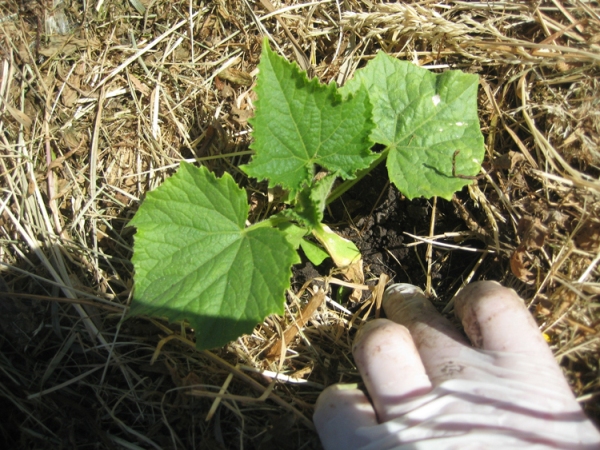
What material is good and how to choose
Before you buy material to protect the beds, it is necessary to study the features of each of the known species.
Frost perfectly protects the white non-woven fabric - spandbond, agril, agrospan, spantex. They are perfectly breathable and airy, light in weight and fairly durable.Their main difference is thickness.
The thinnest can be laid directly on the shoots, pressing down the edges. Thicker will be suitable for arrangement of small greenhouses.
In addition, the material should create reliable protection against harmful insectsthat are a threat to your harvest.
Black films, tightly laid on the beds, will prevent the development weed vegetation.
Preparation of beds in open ground
Ridges are prepared in advance, the place should be lit and warm. Their width is seventy centimetersyou need to dig to the depth of the spade bayonet.
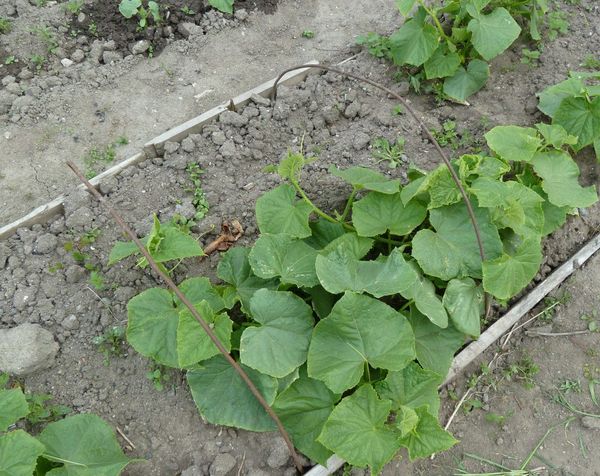
After this, fertilizers of organic group, compost, humus are scattered on the surface. Topsoil is leveled with a rake. Now you can arrange grooves for sowing cucumbers.
Landing
Seeds are sown at intervals fifty centimeters. They are gently pressed into the warm moist soil, sprinkled on top, slightly pressed by hand.
The whole bed powdered with ground black pepper, so that the seeds do not hurt the ants, the shoots do not swallow slugs or mice.
After that, the bed can be covered with a spunbond in two layers.
Peculiarities of care
In the spring, the material will reliably protect against frost, in the summer it will save from heat. But the conditions necessary for the normal development of cucumber plants should be maintained.
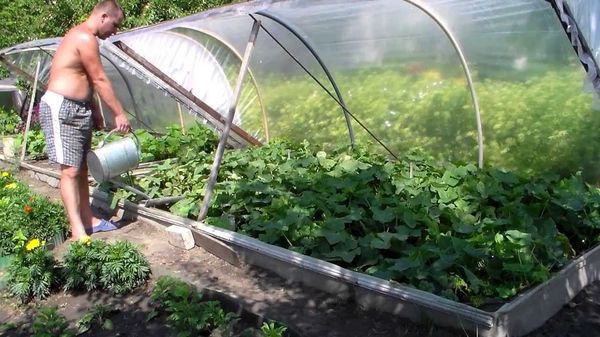
Having planted a culture at the beginning of April, one should not perform frequent watering. Enough of this procedure twice a weekusing warm water. It should be once every seven days to raise the film in sunny weather to give shoots additional light.
May is allowed to start feedingbut during the day temperature should be about twenty degrees of heat, not lower.
It is best to use for this sodium humate, which is dissolved in water at the rate of one spoon per bucket of water. The solution is consumed in the amount of eight liters per square of landing. As a fertilizer once a month, bird droppings are used.
Protection can significantly increase the possibility of growing cucumbers in different climatic conditions. Competently chosen means of shelter will provide an opportunity to increase yields, lower costs in the work on the care of the beds.
